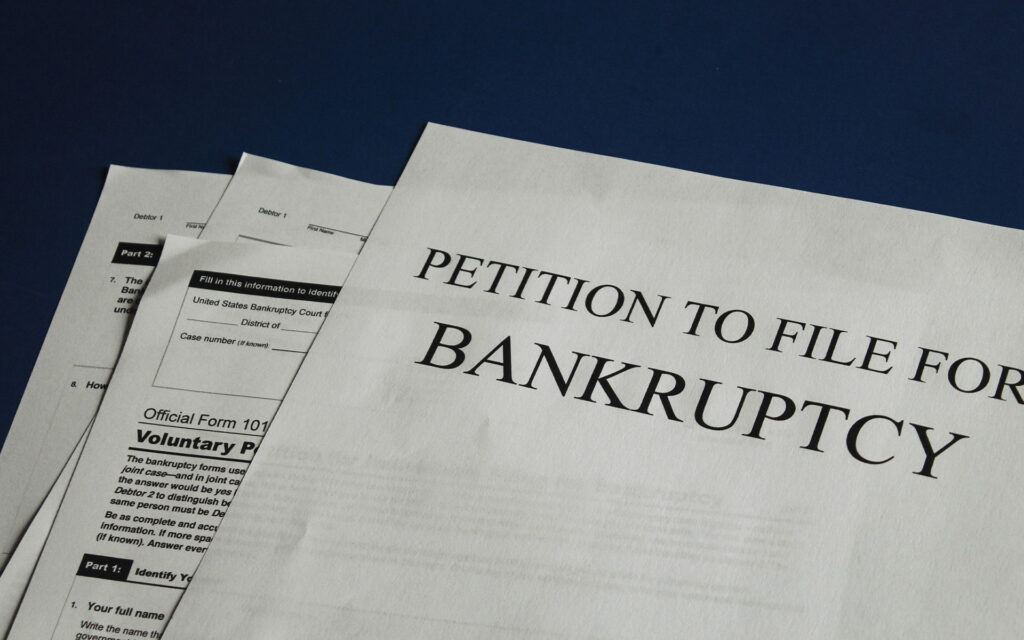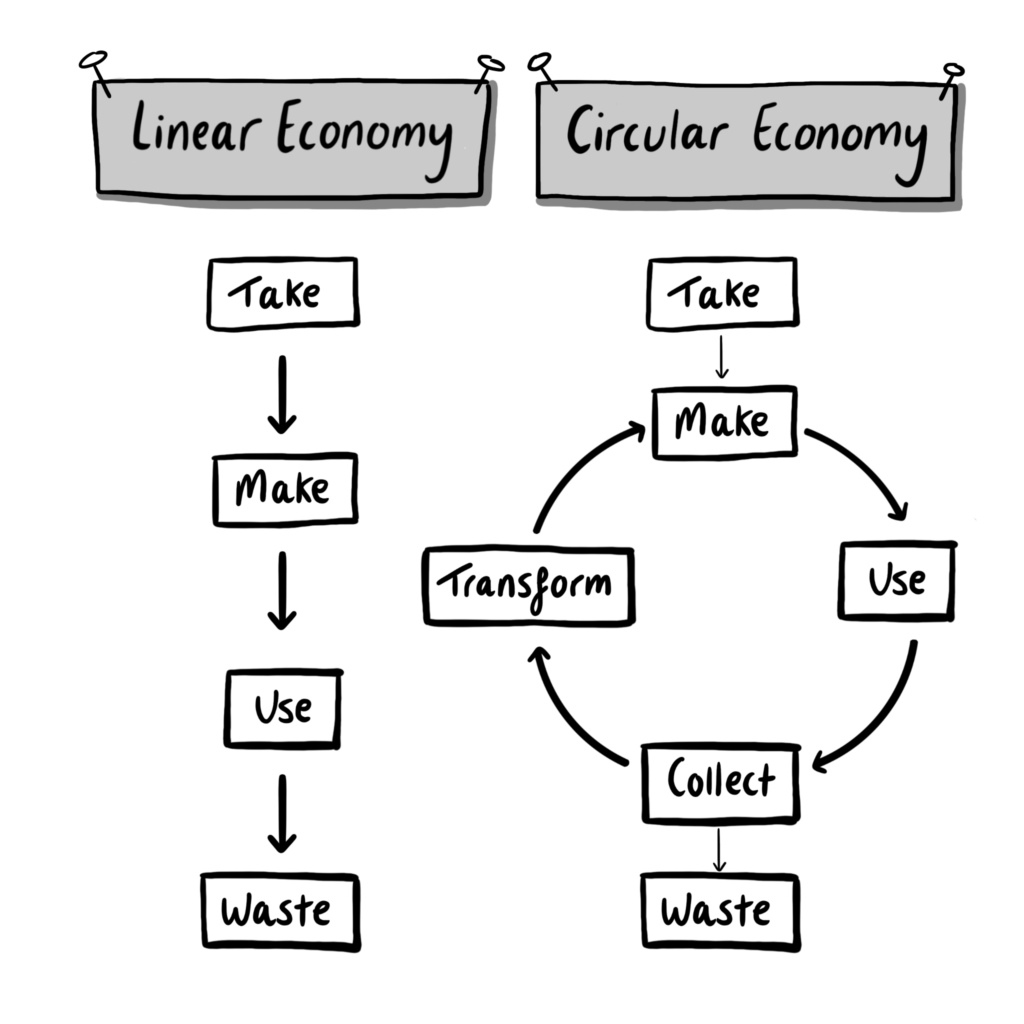On February 25, 2024, we witnessed news that shook the hopes for circularity in sustainable textile industries. Renewcell declared bankruptcy. After years of operating and trying to make an impact in one of the most polluting industries, and despite having the support of well-known brands, Renewcell had to step aside and cease its operations due to a lack of liquidity.

With the perspective of these events, it is inevitable to question the fate of sustainable companies. The downfall of some of these businesses seems to confirm the uncertainty they face, despite their willingness to innovate and address environmental challenges in a world that often overlooks them. This situation also highlights the inherent difficulties these companies, pioneers in their respective industries, face, and the efforts required to operate within a circular economy framework.
Does operating in a market that resists change destined them for economic failure?
First, let’s review the journey of Renewcell and the difficulties that preceded its decline.
A journey filled with challenges
Founded in 2012, this Swedish company emerged from the quest of a group of researchers (from the Royal Institute of Technology in Stockholm) to produce bioethanol. Instead, they stumbled upon a way to dissolve cellulose and decided to establish the company due to its potential use in the textile industry.
That’s the foundation of Renewcell: recycling textile products to obtain a new fiber.
How does it work? Textile waste rich in cellulose, such as cotton or viscose, undergoes collection and dissolution to create a new pulp in sheet form.
Its patented process has earned it multiple recognitions as one of the most innovative sustainable industries in the market.
With circularity as its key, Renewcell became an international reference within the industry. It’s one of the most established and advanced projects, setting a precedent for the viability of incorporating sustainable practices into fashion.
The difficulties
Along its path, Renewcell faced many challenges. The main one: money.
A lack of liquidity cut short its viability to cover the company’s expenses and stay afloat. With sales volume falling below estimates and no quick turnaround in sight, active measures were taken to cut costs.
Thus, by late 2023, it embarked on a workforce restructuring to cut costs, sought new capital injections, incorporated new suppliers, and even received 4 million euros from one of its main investors, the company H&M. However, none of these measures were enough to ensure the continuity of production.
Without the necessary funding to continue operating, Renewcell filed for bankruptcy in February of this year. After failing to reach an agreement between its main investors, lenders, and potential new investors, they made this decision. Consequently, it resulted in the dismissal of its remaining 90 employees and the closure of its production plant located in Sweden.
Words of Pilar Riaño
The lack of scalability, real support, and a vertical structure are some of the key factors in the decline according to Pilar Riaño, from Modaes. She indicates that, to generate profitability, the acquisition of fiber must be of a large volume. Only then will they manage to scale productions and generate profitability. Furthermore, she points out that the lack of an industrial structure created the need for other suppliers to obtain the complete fiber.
Likewise, some specialists indicate that, in addition to external factors, the company still showed technical limitations and shortcomings in its strategic approach. For example, as a material supplier, it should have been located in places with abundant textile production, such as Asia, instead of Europe.

Altor to the rescue
A few days ago, Renewcell’s second chance brought optimism back to sustainable companies.
Altor, a Swedish private equity firm known for its investments in sustainable businesses, has acquired the remaining assets of the company. Thus, it has invested in Renewcell to revive it and achieve global scalability.
Altor believes that Renewcell has the capacity to drive the transition from the current fashion industry to a more sustainable, responsible, and circular one. The technological innovation that characterizes Renewcell, along with the need for solutions in the industry, point to a promising future for the company. They expect that its production will increase to the point of ensuring its availability internationally.
Thanks to this news, Altor addresses the fears caused by the bankruptcy declaration. These fears highlighted the need for investment to scale solutions and because they jeopardize the investments of large groups in new companies with innovative solutions.
While we find a happy ending here, the rest of sustainable companies declared bankrupt do not share the same fate. So, what is happening with alternatives like circularity? Why are they unable to penetrate the market to transform the current business and economic landscape?
A necessary change
Let’s review the foundations of this economy, depicted as the holy grail of today’s industries.
The circular economy, unlike the prevailing one today, aims to close the sequence of steps in the production chain for the consumer market. In other words, ‘it seeks to reconcile the extraction, production, and use of goods and resources with their limited availability and the regenerative capacities of nature.’ This is synthesized by Tomas Siderius and Kim Poldner, specialists in sustainable business. Additionally, a functional circular economy ‘truly mimics natural circular systems, creates supportive and collaborative structures, and promotes stabilizing incentives that lead to the natural production of sustainable abundance.’
The linear economy
This implies a total change in the supply chain, by working with the idea of recirculating materials and products within the economy.
Its counterpart, the linear economy that prevails today, is based on the extraction, use, and disposal of resources and products that are severely affecting the planet. This represents a destructive model, driven by the idea of scarcity, which is depleting the vital resources of nature. Its consequences are not only evident in the environment but also in society itself. The gaps widen and socio-economic strata are marked, ‘as the burdens created by the system are disproportionately placed on the shoulders of the poor’.

That’s why the contrast with which the circular economy is presented is attractive in an era like ours. Its premise is captivating: by applying available technical solutions, we can continue consuming and our economies can grow without incurring environmental costs. However, it’s not that simple. Circularity remains a proposal. Although it’s a grand idea that would solve our problems, it doesn’t quite work because it’s forced to adjust to the limitations of the current market economy.
The current market system is counterproductive
In a very interesting article titled “Markets and the Future of the Circular Economy,” authors Tomas Siderius and Trevor Zink argue that the circular economy is destined to fail because our world is dominated by a market system. Therefore, until there is a fundamental change in the economic structure, the future of these companies will be discouraging.
There are 4 central characteristics in this system that contradict a functional circular economy: private ownership, competition, the labor market (where human labor is a marketable good), and value determined by price.
These characteristics reaffirm the insatiable spirit of a capitalist economy, with a goal of infinite growth fueled by its desires to attain more profits and to compete against its rivals. A system that lacks sustainability by overlooking an important fact: we live on a finite planet that needs regeneration, and whose resources do not grow infinitely.
So, as long as the rules of a capitalist market govern it, it will not succeed because the system will not allow it to achieve its transformative objectives, which are necessary for addressing the environmental crisis.
A glimmer of hope
Circularity is imperative to ensure the life and resources of the planet, but it needs to generate systemic changes for its success.
Siderius and Zink indicate that significant change will only occur when those 4 central characteristics of the market are actively transformed, opposing the logic of capital. Thus, the circular economy will function when the assumption of scarcity shifts towards sustainable abundance, where technical efficiency is adopted. In other words, when we learn to use all resources efficiently, producing the maximum with the minimum resources, and harnessing all possible potential.
Similarly, supporting the change requires the participation of all social actors and the inclusion of their forces. Companies, sustainable industries, consumers, governments, and policymakers must join forces to safeguard Earth’s resources.
Let’s hope that each party takes action, that more investment goes into transformative ideas, and that the future presents fewer obstacles for projects like Renewcell, which seek solutions for a more sustainable world, far from the environmental crisis that haunts us.





